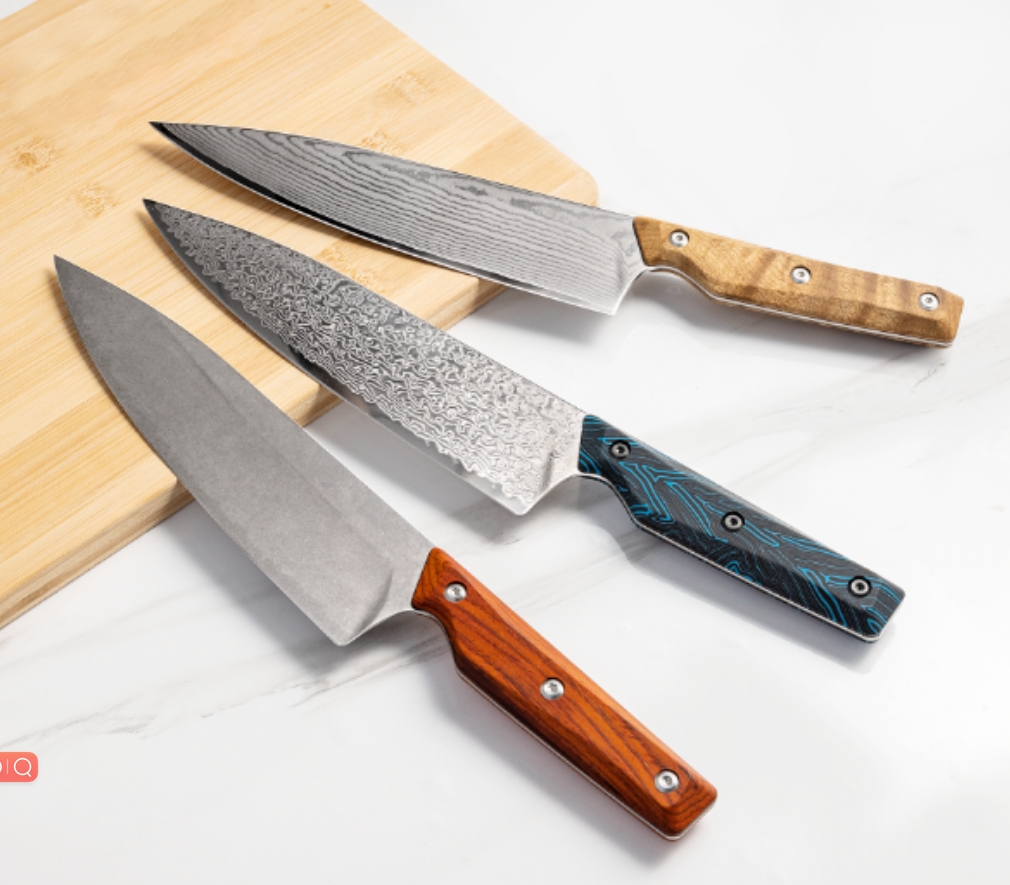Maintaining a kitchen knife is crucial to ensure its longevity, performance, and safety. Here's a detailed guide on how to maintain your kitchen knife:
Cleaning
After Each Use
- Hand Wash: Immediately after use, wash your knife by hand with warm water and mild dish soap. Avoid using abrasive sponges or scrubbers.
- Rinse: Thoroughly rinse off all soap to prevent any residue.
- Dry: Dry the knife immediately with a clean towel to prevent water spots and rust.
Avoiding the Dishwasher
- Dishwasher Damage: The high heat, harsh detergents, and banging against other utensils can dull the blade and damage the handle.
- Handle Care: Wooden handles can crack, and plastic handles can become brittle over time in the dishwasher.
Sharpening
Tools Needed
- Sharpening Stone (Whetstone): For sharpening the edge.
- Honing Rod: For maintaining the edge between sharpenings.
- Strop: For final polishing of the blade.
Sharpening Process
- Preparation: Wet the sharpening stone with water or honing oil.
- Angle: Maintain a consistent angle, typically 15-20 degrees, depending on the knife.
- Sharpening Motion:
- Place the knife at the correct angle on the stone.
- Draw the blade across the stone from heel to tip in a sweeping motion.
- Repeat on both sides of the blade, maintaining the same angle.
- Honing: Use a honing rod to realign the edge. Hold the rod vertically and draw the blade down the rod at the same angle used for sharpening.
- Stropping: Finish by stropping the blade. Drag the blade along the strop, away from the edge, to polish and refine the sharpness
Regular Maintenance
Inspection
- Blade: Regularly check for chips, nicks, or rust spots.
- Handle: Ensure the handle is secure and free from cracks or splits.
Lubrication
- Blade: Occasionally, apply a light coat of mineral oil to prevent rust, especially if the knife is made of high-carbon steel.
Moving Parts (for folding knives): Lubricate the pivot area with a drop of oil.
Handle Care
- Wood Handles: Treat with food-grade mineral oil or beeswax to prevent drying and cracking.
- Plastic or Composite Handles: Clean with mild soap and water; avoid prolonged exposure to high heat.
Storage
- Knife Block: Store knives in a wooden or bamboo knife block to protect the blade.
- Magnetic Strip: Use a magnetic strip to store knives securely while keeping the blades accessible.
- Drawer Organizer: Use a knife-specific drawer organizer to prevent the blades from knocking against each other.
- Blade Guards: Use blade guards if storing knives in a drawer without a specific organizer.
Cutting Surfaces
- Use Appropriate Boards: Always use wooden or plastic cutting boards. Avoid cutting on hard surfaces like glass, stone, or metal, which can dull the blade.
- Avoid Hard Foods: Use appropriate tools for cutting through bones or hard shells to avoid damaging the knife blade.
Safety Tips
- Sharp Blades: Always keep your blade sharp. Dull knives require more force, increasing the risk of slipping and causing injury.
- Handling: Always handle the knife with care. Cut away from your body and keep your fingers clear of the blade.
- Proper Use: Use the knife for its intended purpose. Avoid using kitchen knives for prying, unscrewing, or cutting non-food items.
By following these maintenance steps, you can ensure that your kitchen knife remains in excellent condition, providing you with a reliable and safe cutting tool for years to come. Regular care and attention will keep your knife sharp, clean, and ready for any culinary task.

